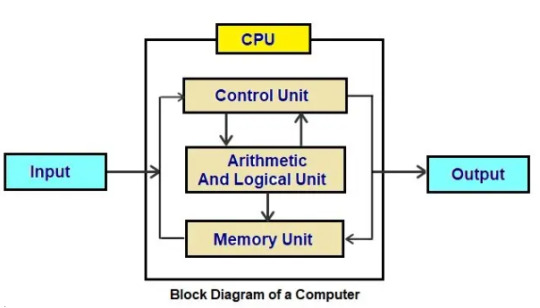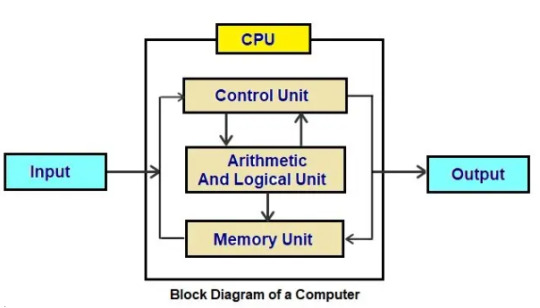#explainblockdiagramofcomputer
Explore tagged Tumblr posts
Text
Inside the CPU: A Block Diagram of CPU Overview

A CPU, like a computer's brain, below is the block diagram of CPU and its explanation that works together
Control Unit (CU): Tells the CPU what to do.
Arithmetic Logic Unit (ALU): Does math and logical tasks.
Registers: Small, quick memory.
Cache Memory: Stores frequently used info.
RAM (Main Memory): Holds active stuff.
Bus Interface: Connects to other parts.
Clock Generator: Keeps everything on time.
The Control Unit fetches instructions, figures out what they mean, and tells the ALU and Registers what to do. Data moves between Registers and Memory through buses. Cache and RAM store data for quick access. The Clock Generator makes sure everything happens at the right time.
This picture shows how a CPU works in simple terms.
Read More: https://goglobalways.com/blog/a-block-diagram-of-the-digital-computer-system/
0 notes
Text
Why do we need Block Diagram of Computer?

A block diagram of a computer is like a simple drawing that shows all the important parts of the computer and how they connect together. It's like a map that helps people understand how the computer works without getting lost in all the complicated details. This drawing is really useful for computer experts because it helps them design, fix, and talk about computers more easily. It's like having a clear picture that guides them when they're working on computers. So, the block diagram is like a helpful tool that makes working with computers simpler and clearer.
Read More: https://goglobalways.com/blog/a-block-diagram-of-the-digital-computer-system/
0 notes
Text
Explain block diagram of computer

A block diagram of a computer shows a computer's functional components and their interconnections. The four major components of a computer are the input devices (keyboard, mouse), the CPU, which performs instructions, the memory units (RAM, ROM), which store data, and the output devices (monitor, printer).
Input data flows to the CPU, where it is processed and memorized. The CPU reads information and commands from memory, analyses them, and then transmits the finished product to output devices. The computer can efficiently run programs and carry out a wide range of activities because of this sequential flow, giving it an extensible tool for communication, computation, and information processing.
Read Also: Explain block diagram of computer
https://goglobalways.com/blog/a-block-diagram-of-the-digital-computer-system/
0 notes